Multiple Choice
Identify the
choice that best completes the statement or answers the question.
|
|
|
1.
|
A plant has a thick waxy cuticle to prevent moisture loss. The interior of the
plant is hollow and is used to store large quantities of water. The leaves of the plant have evolved
into sharp spines, which protect the flesh of the plant from water-seeking animals. Which environment
is MOST suited to this organism?
|
|
|
2.
|
A salamander,raised away from water until long after its siblings, will swim
every bit as well as them the very first time it is placed in the water. For salamanders, swimming is
a(n)
a. | learned behavior. | c. | diurnal behavior. | b. | innate behavior. | d. | reflex
behavior. |
|
|
|
3.
|
In a given area of the Serengeti National Park, the following distribution of
animals occurs. 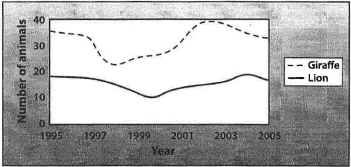 Which of the following correctly
explains the population changes shown in the graph? a. | The giraffe and l ion population reached carrying capacity i n
1997. | b. | A sudden decrease i n the giraffe population immediately reduces the lion
population. | c. | The l ion population increases i n response to a decrease i n the giraffe
population. | d. | A change i n the giraffe population is met with a corresponding change in the lion
population after a 1-2 year lag time. |
|
|
|
4.
|
Which organelle helps to maintain homeostasis within a multicellular organism
through the exchange of materials with other nearby cells?
a. | cell mem brane | c. | mitochondria | b. | nucleus | d. | vacuole |
|
|
|
5.
|
Plants must use oxygen i n the process of respi ration. Based on this
information, which of the following is a valid conclusion?
a. | Plants are likely i ncapabl e of anaerobic respiration. | b. | Plants on ly engage
i n anaerobic respi ration. | c. | Plants must use a synthetic respi ration
process. | d. | Plants do not respi re, only animals. |
|
|
|
6.
|
The organelle indicated by an arrow i n the following diagram contains a pigment
responsible for capturing sunlight needed for the process of 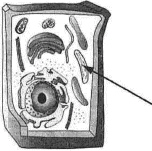  a. | photosynthesis. | c. | nutrient absorption. | b. | aerobic respiration. | d. | cellular
transport. |
|
|
|
7.
|
Mass extinction is an event i n which many types of living things become extinct
at the same time.
Which of the following statements is the MOST LIKELY description of the
aftermath of a mass extinction?
a. | A mass extinction results in gradual extinction of all other species presently alive
on the Earth. | b. | The survivors of a mass extinction have a great deal of ecological opportunity
available to them. Many habitats are opened, and an abundance of new species may
evolve. | c. | With less demands on resources, surviving species tend to stay unchanged for a long
period of time following a mass extinction. | d. | After a mass extinction, the occurrence of
genetic mutations i n surviving species will significantly increase. |
|
|
|
8.
|
Prokaryotic cells differ from eukaryotic cells in that
a. | prokaryotic cells are living and eukaryotic cells are nonliving. | b. | prokaryotic cells
lack a true nucleus and mem bra ne bound organelles. | c. | prokaryotic cells are much larger than
eukaryotic cells. | d. | prokaryotic cells require oxygen and eukaryotic
cells do not. |
|
|
|
9.
|
An animal cell is placed in a solution of distilled water. If left overnight,
this cell will
a. | shrivel and die. | b. | undergo chemosynthesis. | c. | swell and
burst. | d. | remain the same, since it has a cell wall to protect
it. |
|
|
|
10.
|
Diffusion takes place
a. | only in liquids. | b. | only through a lipid bi
layer. | c. | from an area of high concentration to an area of low
concentration. | d. | from an area of low concentration to an area of high
concentration. |
|
|
|
11.
|
What is the correct order of the stages of mitosis?
a. | prophase, metaphase, anaphase, telophase | b. | metaphase, anaphase,
telophase, prophase | c. | prophase, telophase, metaphase,
anaphase | d. | anaphase, metaphase, prophase, telophase |
|
|
|
12.
|
Angiosperms, the flowering plants, are the most successful plants on Earth and
have dominated the Earth's plant life for the past 65 million years. They can live almost
anywhere on land and
do not need to be near standi ng water to reproduce. Which of the following
adaptation of angiosperms has allowed them to become fully adapted to life on land?
a. | seeds contained within protective fruits | b. | male and female
parts contained in separate flowers | c. | less specialized xylem and phloem that require
less energy from the plant to maintain | d. | very small leaves that reduce water loss in the
plant |
|
|
|
13.
|
A cabbage farmer has a five-acre field of cabbage. Each year, his crop is
attacked by cabbage eating beetles. To com bat the problem, the farmer sprays his field with a mild
pesticide. The pesticide kills 85% of the beetles on his field. I n 1995, the farmer used 25 gallons
to kill the beetles; however, by 2005, the farmer needed 40 gallons of pesticide to kill the same
percentage of beetles. Why did the farmer need to use more pesticide to kill the same percentage of
insects over the ten year period?
a. | because the beetles that had already been exposed to the pesticide were
weaker | b. | because the surviving 15% of beetles were the only beetles reproducing each year,
thus creating a population of beetles resistant to the pesticide | c. | because the farmer
wants to buy lots of pesticide from his friend, the pesticide salesman | d. | because in 2005,
more beetles attacked the fields than in 1995 |
|
|
|
14.
|
The spines of a cactus are modified leaves. The thorn of a rose is a modified
branch. What does this suggest about the evolution of these two families of plants?
a. | The spine and the thorn are homologous structures and are proof of common
ancestry. | b. | The spine and the thorn are analogous structures and are not proof of common
ancestry. | c. | The spine and the thorn have separate functions, so they are not homologous and
provide no evidence to support a common ancestor. | d. | The spine and the thorn are vestigial
structures that have not evolved. |
|
|
|
15.
|
During meiosis, only one chromosome from each homologue is passed on to the
offspring. This helps increase
a. | genetic variation . | c. | fertilization rates. | b. | genetic mutations. | d. | the rate of
evolution. |
|
|
|
16.
|
A microorganism is found i n the li n i ng of the human stomach. It has a
flexible cell wall, no organelles and flagella. What is this organism?
a. | plant cell | c. | virus | b. | animal cell | d. | Bacteria |
|
|
|
17.
|
The figure below shows the pelvic bones of a sperm whale. What is the BEST
description of this structure? 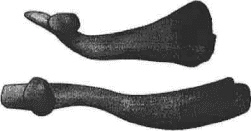  a. | The structure is homologous to a human's foot. | b. | The structure is
homologous to a bird's wing. | c. | The structure is evidence of
mutation. | d. | The structure is vestigial. |
|
|
|
18.
|
Recall that an ecosystem is the interdependence of plant and animal com munities
and the physical environment in which they live. Which of the following is an accurate description of
an ecosystem in that it includes all components of an ecosystem?
a. | The tropical rainforest is found near the equator. It has abundant rainfall, stays
very
humid, and experiences an average summer temperature of 25°C. The floor of the tropical
rain forest does not get much sunlight. | b. | The desert does not have much grass. Plants
like sage brush, mesquite, and cacti have adapted well to desert conditions. Animals common to the
desert are kangaroo rats, snakes, lizards, birds, spiders and insects. | c. | The tundra is
located near the north and south poles and experiences light rainfalI.
Summer temperatures average
only 1°C. The subsoiI of the tundra is permanently frozen. Grasses, mosses, and lichens are
present. Animals such as polar bears, caribou, hares, arctic wolves and birds live in the
tundra. | d. | Freshwater systems include streams, rivers, lakes, marshes, and swam ps. Freshwater
is important in recycling the earth's water supply. The Sun's heat does not warm water as
quickly as it warms land. Al l organisms require freshwater for
survival. |
|
|
|
19.
|
Which of the following actions will have a positive effect on the natural
environment?
a. | overuse of garden fertilizers | b. | placing grass clippings in plastic bags and
sending them to a landfill | c. | carpooling with three coworkers who live
nearby | d. | voting i n favor of a local referendum to fill in
marshland |
|
|
|
20.
|
Consider an energy pyramid that has four trophic levels; as shown in the figure
below. 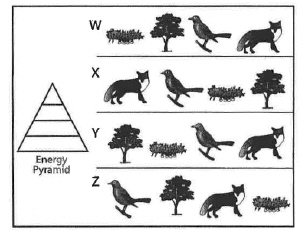 What is the correct ordering of the four
organisms pictured from the lowest trophic level to the top trophic level? a. | Order W | c. | Order Y | b. | Order X | d. | Order Z |
|
|
|
21.
|
Which of the following accurately illustrates active transport? SB4b DOK
2. 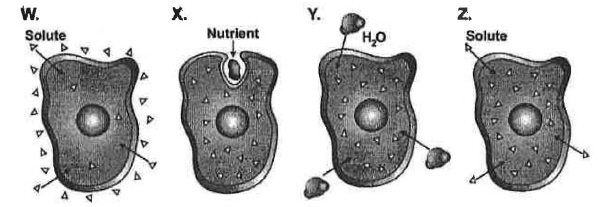 a. | images X & Z | c. | images W & Y | b. | only image Z | d. | only image Y |
|
|
|
22.
|
The illustration BEST shows  a. | how much food a shark needs to eat in order to survive. | b. | the flow of energy
from one organism to the next. | c. | the diversity of species i n the
ocean. | d. | the type of foods a shark likes to eat. |
|
|
|
23.
|
a. | The individual has Down syndrome. | c. | The individual is
female. | b. | The individual is male. | d. | The individual is a carrier for hemophilia. |
|
|
|
24.
|
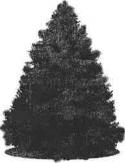 An environment has cold, harsh winters with
temperatures often far below freezing and cool summers with temperatures just above 45 °F. This
environment receives a moderate amount of precipitation. 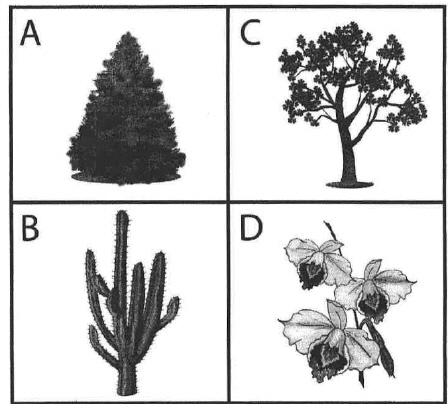 Which
organism would MOST LIKELY live in this environment?
|
|
|
25.
|
In biological terms, what does succession mean?
a. | a descendant of animal breeding | b. | the result when one species is more successful
than another | c. | the gradual change of dominant species present in an ecosystem | d. | There is no
biological term called succession. |
|
|
|
26.
|
Industrial emissions of nitrogen oxides and sulfur dioxides eventually result in
all of the following except
a. | an increase of the pH in stream water samples taken from industrial
areas. | b. | acid rain that damages the leaves of plants. | c. | precipitation that
changes the chemistry of standi ng water and soil. | d. | global warming. |
|
|
|
27.
|
The ancestors of pol ar bears became separated from brown bears when they moved
from the main land to the Arctic ice. The traits selected in the Arctic ice population were
different than the traits selected in the land population. Eventually, the two populations could no
longer interbreed. Today, we call the descendants of the Arctic ice population "polar
bears" and the descendants of the main land population "brown bears." What pattern of
evolution is described?
a. | divergent evolution | c. | coevolution | b. | extinction | d. | Convergent
Evolution |
|
|
|
28.
|
Change is to evolution as lack of change is to
a. | polygenic traits. | c. | genetic equilibrium. | b. | genetic variation. | d. | Gene pool. |
|
|
|
29.
|
ATP stands for
a. | adenosine diphosphate. | c. | adenosine tryphosphate. | b. | adenosine triple
phosphorous. | d. | adenosine
tryphosphorous. |
|
|
|
30.
|
Which property of water allows many different substances to be dissolved?
a. | adhesive | c. | polarity | b. | cohesive | d. | translucent |
|
|
|
31.
|
Sweating is a process by which excess water and salts and a small amount of urea
are removed from the human body. Sweating involves the skin and the excretory system. This ability of
an organism to maintain a stable internal environment is called
a. | homeostasis. | c. | meiosis. | b. | respiration. | d. | fixation. |
|
|
|
32.
|
Look at the picture and classification key below. 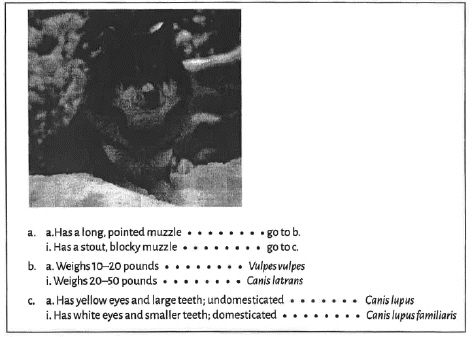 According to the classification key, to which genus and species does this member
of the family Canidae belong? a. | Vulpes vulpes | c. | Canis lupus | b. | Canis Lantrans | d. | Canis lupus
familiaris |
|
|
|
33.
|
Around 60% of electricity produced in the United States is produced by burning
coal or natural gas. The combustion of these fossil fuels does NOT lead to which consequence
below?
a. | global climate change | c. | increased rates of human illness | b. | increased air
pollution | d. | alteration of the
nitrogen cycle |
|
|
|
34.
|
A unicellular organism reproduces asexually through binary fission. If the
parent cell contains 28 chromosomes, how many chromosomes are contained within the daughter
cell?
|
|
|
35.
|
Which cell is defined as not having a true nucleus?
a. | prokaryotic | c. | eukaryotic | b. | ribosome | d. | cilia |
|
|
|
36.
|
The equation below summarizes what biological process?  a. | hemophotosynthesis | c. | photosynthesis | b. | fermentation | d. | cellular
respiration |
|
|
|
37.
|
Organism Y has an internal salt concentration of 3g/L. Solution A has a salt
concentration of 5g/l. What will MOST LIKELY happen to the organism if it is placed in solution
A?
a. | The organism will swell. | c. | The organism will
duplicate. | b. | The organism will shrink. | d. | The organism will do nothing. |
|
|
|
38.
|
Which two nutrient cycles are MOST directly impacted by the fertilizers used i n
large- scale agricultural?
a. | carbon and water cycles | c. | nitrogen and phosphorous
cycles | b. | carbon and nitrogen cycles | d. | phosphorous and water cycles |
|
|
|
39.
|
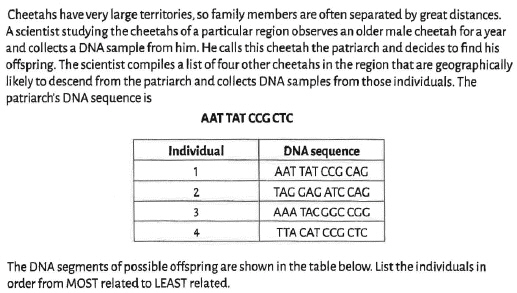 9.
|
|
|
40.
|
A mother is homozygous recessive for a trait. The father is homozygous dominant
for the same trait. What are the genotypes of the offspring for that trait?
a. | 100% heterozygous | b. | 25% homozygous dominant, 25% homozygous
recessive, and 50% heterozygous | c. | 100% homozygous dominant | d. | 50% homozygous
dominant, 50% homozygous recessive |
|
|
|
41.
|
A species of bird lives i n a canyon. This bird is reproductively isolated from
other bird species i n the area. The males of this type of bird species produce colorful red and blue
iridescent feathers. During warmer years (greater than 78°F), more food is available and males
can produce more vivid coloration. Females will on ly mate with males that have vivid coloration.
During the warmer years, there are more successful breeding pairs of birds and more offspring. The
graph below summarizes the number of offspring born each year. 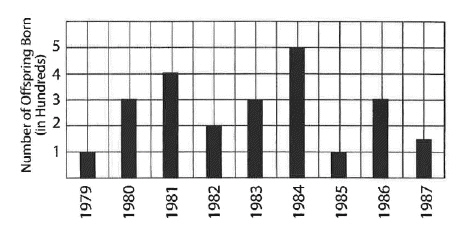 If the
average breeding season temperature is greater than 80 °F for the next five years, what trend(s)
will be observed? a. | Bird coloration will become more dull. | c. | More offspring will be
produced. | b. | Bird coloration will stay the same. | d. | Only female birds will be
produced. |
|
|
|
42.
|
The DNA strand below is one half of a complementary
pair.
TACCCATTCGAT
Which of the following correctly shows the complementary DNA strands with
the duplication mutation?
a. | TACCCATTCGATGAT | c. | UACCCAUUCGAUGAU | b. | TACCCATTCTAG | d. | ATGGGTAAGCTACTA |
|
|
|
43.
|
The snowshoe rabbit is a primary consumer. I n summer, it feeds on plants like
grass, ferns, and leaves; i n winter, it eats twigs, bark from trees, and buds from flowers and
plants. The fox is both a secondary consumer and an omnivore, eating rabbits and other small prey, as
well as a wide variety of vegetation. During the summer months, the rabbit has a brown coat to
camouflage with the forest floor. Then, during the winter months, the rabbit grows a white coat to
camouflage with the snow. This chromatic camouflage h ides it from the fox. If unusually warm winter
conditions cause premature melting of the snow, what would you expect to happen to the rabbit
population?
a. | It would increase greatly, due to the increased food supply. | b. | It would decrease
greatly, due to the increased predation. | c. | It would not change. | d. | I t would probably
decrease somewhat, with increased predation outweighing the effect of greater food
supply. |
|
|
|
44.
|
In some fruit flies, the allele for having black eyes (B) is dominant to the
allele for having red eyes (b). A scientist mated a batch of fruit flies with genotypes as shown in
the Punnett Square. What is the probability that the offspring will be born with red eyes? 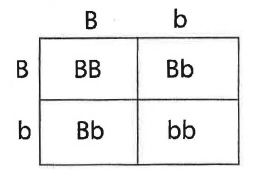
|
|
|
45.
|
The DNA code eventually directs the cell to manufacture
a. | various proteins. | c. | hydrogen bonds. | b. | amino acids. | d. | sugars. |
|
|
|
46.
|
What allows you to draw on your observations of specific events to hypothesize a
general trend? Select the best term:
a. | deductive reasoning | c. | objective logic | b. | subjective | d. | inductive
reasoning |
|
|
|
47.
|
Which of the following statements about mutations is NOT true?
a. | Mutations can be spontaneous. | b. | Mutations can be caused by environmental
factors. | c. | Mutations can occur in sex cells. | d. | Most mutations have extremely negative effects
on an organism. |
|
|
|
48.
|
What ratio BEST describes the growth of plant A? 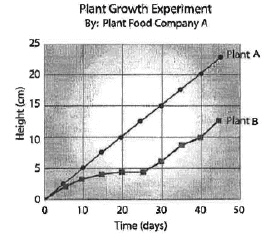 a. | 20/40 | c. | 10/40 | b. | 40/20 | d. | Cannot be
determined |
|
|
|
49.
|
The variable that tests whether the hypothesis is valid or not is called
the
a. | Independent variable | c. | dependent variable | b. | controlled variable | d. | observation |
|
|
|
50.
|
a. | Individuals 1and2 may be his sisters. | c. | Individuals 2 and 3 may be his
sisters. | b. | Individuals 1and3 may be his sisters. | d. | None of the individuals is a
sibling. |
|
|
|
51.
|
Differences that exist among members of the same species are known as
a. | natural variation. | c. | natural selection | b. | artificial selection | d. | genetic drift |
|
|
|
52.
|
Bacteria in habit the intestines of cows. and both benefit from the
relationship. Cows eat plants but cannot digest the cellulose. The bacteria derive their nutrition
from the plants the cows eat and make available nutrients for the cow by breaking down the plant
cellulose. What symbiotic interaction is illustrated by the cows and bacteria? 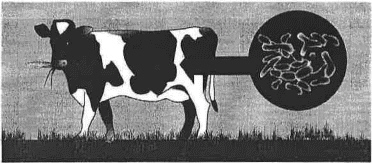 a. | mutualism | c. | parasitism | b. | predation | d. | commensalism |
|
|
|
53.
|
A raisin was left in a solution overnight and was swollen by morning. The
solution that the raisin was placed in was
a. | hypertonic. | c. | isotonic. | b. | hypotonic. | d. | acidic. |
|
|
|
54.
|
Enzymes are one kind of protein. What are proteins made up of ?
a. | nucleic acids | c. | carbohydrates | b. | amino acids | d. | lipids |
|
|
|
55.
|
Homeostasis is the term for the relatively stable internal environment
maintained by an organism. During physical exertion, animals begin to res pi re (breathe) heavily.
What is the purpose of the heavy breathing?
a. | to decrease heat loss | b. | to increase the amount of oxygen available to
cells and remove excess water | c. | to increase the amount of oxygen available to
cells and remove excess carbon dioxide | d. | to increase the amount of carbon dioxide
available to cells and remove excess oxygen |
|
|
|
56.
|
Scientific studies have shown that a mutation in gene p53 is present i n
cancerous skin tumors. It has also been shown that consistent exposure to UV radiation or high levels
of UV radiation is associated with occurrences of mutations i n gene p53 of skin cells. Why is it
that a mother who had the mutation in gene p53 and had skin cancer and a mother who did not have
either the mutation in gene p53 or skin cancer both had offspring that did not have the p53
mutation?
a. | The offspring did not have the ski n cell mutation because neither of the fathers had
the mutated gene, and both parents must donate the mutated p53 skin cell gene for the offspring to
also have the mutation. | b. | The offspring of the mother with skin cancer
did not have the mutated p53 gene because the mother did not sunbathe during
pregnancy. | c. | The offspring did not have the skin cell mutation because only mutations in
reproductive cells are able to be passed on to offspring. | d. | Since there is a 1
in 4 chance of an offspring receiving a mutated gene from its parents, it is by chance that neither
offspring received the mutated gene. |
|
|
|
57.
|
The cellular component indicated by the arrow is 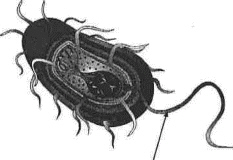 a. | cilia. | c. | cell membrane. | b. | flagellum. | d. | pilus. |
|
|
|
58.
|
One important way to control the spread of viruses is through
a. | the use of vaccines. | c. | the use of other types of bacteria. | b. | proper hand
washing. | d. | the use of
antibiotics. |
|
|
|
59.
|
The message of the DNA code instructs the cell to build which biomolecule listed
below?
a. | nucleic acids | c. | proteins | b. | glucose | d. | polysaccharides |
|
|
|
60.
|
The main function of lipids with in a cell is to
a. | provide the main structural components of the cel l mem brane. | b. | provide energy
storage within the cell. | c. | provide cellular energy. | d. | store cellular
information. |
|